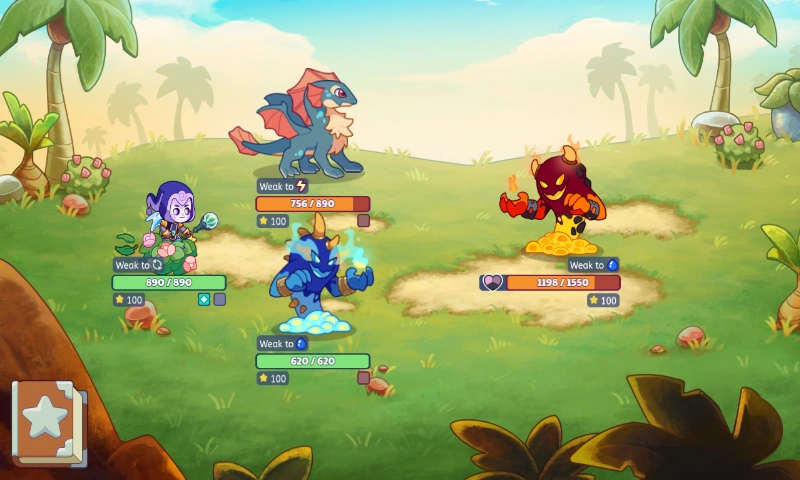Prodigy Age - Mindless Behavior And Digital Learning
In our busy, connected world, it's pretty common to see young people glued to screens, playing games that are, in some ways, meant to help them learn. This shift toward digital ways of getting better at schoolwork has really changed how many kids spend their time. It feels like almost every child, from the very young ones to those a bit older, has spent some moments with a tablet or computer, trying to solve problems or move through virtual worlds. This change, you know, has brought up some interesting questions about how we learn and what it truly means to be engaged with material.
One such tool, which many might recognize, is a popular online program where kids can practice math and English. It comes with cool stuff like amazing virtual pets, big fights to win, and chances to go on quests. This program, as a matter of fact, offers new puzzles and tasks around every corner, asking students to give answers that fit the situation. Teachers and parents also have ways to help their students and kids with their schoolwork, which is really helpful for guiding them. It's a completely free thing for teachers, too, so it helps with classroom money worries.
But here's a thought that sometimes pops up: with all this screen time and all these game-like elements, could it be that kids are just going through the motions? Is it possible that, for some, this constant interaction might lead to what some folks call "prodigy age mindless behavior," where they're just reacting without really thinking things through? It's a question worth looking at, especially when we consider how young brains grow and learn.
- Missamberfields Onlyfans
- Bokep Twitter Indonesia
- Beryl Christie Harris
- Bernice Burgos Twitter
- Ekane Big Moose Twitter
Table of Contents
- What Exactly is This "Prodigy Age" We Talk About?
- Beyond the Sparkle- Is There a Risk of Prodigy Age Mindless Behavior?
- The Lure of the Screen- Why Do Students Keep Playing?
- The Fine Line- Engagement Versus True Thought in the Prodigy Age
- Can Tools for Learning Lead to Mindless Behavior?
- Teacher and Parent Views on Prodigy Age Mindless Behavior
- Rethinking Practice- How Can We Avoid Mindless Behavior in the Prodigy Age?
- The Path Ahead for Digital Learning
What Exactly is This "Prodigy Age" We Talk About?
When we talk about the "prodigy age," we're really talking about a time when learning has taken on a very different shape for many young people. It's a period where digital tools and platforms are often the first place kids go for schoolwork, for fun, and for just about anything in between. Think about it: a program where students can log in to play math and English challenges. This kind of setup, you know, has become a pretty common sight in homes and classrooms all over. It’s a place where kids can find amazing pets to collect, take part in what feel like epic battles, and get their math practice done, all at the same time.
This specific platform, for instance, makes sure there are always new puzzles and tasks popping up around every corner. Students have to answer questions that change based on how they're doing, which means the program tries to keep things just hard enough to be interesting, but not so hard that kids give up. It's also a big deal that this resource is completely free for teachers. This means it helps them support learning without having to worry about classroom money limits, which is, honestly, a huge help for many schools. Over 800,000 teachers use this program every year without any cost, and millions of students use it to practice their skills. You can sign up to make an account as a teacher, parent, or student, which makes it pretty easy to get started. So, it's not just a game; it's a widely used educational tool that shapes how many children experience learning today.
Beyond the Sparkle- Is There a Risk of Prodigy Age Mindless Behavior?
It’s true, these digital learning programs can look really exciting with all their bright colors, fun characters, and immediate rewards. They certainly grab a child's attention, and that's a good thing for getting kids interested in school subjects. However, a question that sometimes comes up is whether all that sparkle might, in some respects, lead to something less helpful: a kind of "prodigy age mindless behavior." This means kids might just be going through the motions, clicking answers, and getting points without truly understanding the ideas behind what they're doing. It's like they're just trying to get to the next level or earn the next virtual pet, rather than stopping to really think about the math problem or the English rule they're working on.
- Corey Hudson Twitter
- Bill Orielly Twitter
- Sam Mckewon Twitter
- Alex Coal Twitter
- Court Logan Porn Twitter
When students are constantly faced with new challenges around every corner, and they just need to answer questions to move forward, there’s a chance that the focus shifts from deep thought to quick reaction. The program's way of changing the questions to fit the student, while meant to be helpful, could also mean that kids learn to guess or use quick tricks instead of building a solid grasp of the material. For example, if a child gets stuck, they might just try different options until one works, rather than figuring out why it works. This kind of interaction, you know, can sometimes become more about pattern recognition for the game itself than about true learning. So, while the program offers a quest with twice the might and epic new mysteries, we have to ask if these mysteries are truly engaging the mind or just keeping fingers busy.
The Lure of the Screen- Why Do Students Keep Playing?
It's honestly no secret that screens hold a powerful draw for young people. When you think about it, programs like the one we're discussing are built with elements that make them incredibly sticky. The idea of collecting amazing pets, for example, taps into a very human desire to gather things and complete sets. Then there are the epic battles, which provide a sense of challenge and victory, making kids feel like they've achieved something important. These kinds of features are very much like the parts of other popular games that keep players coming back for more, so it's understandable why students would want to keep playing, especially when it’s tied to schoolwork.
The way these programs are set up, with new challenges around every corner, means there's always something fresh to do. This constant stream of newness keeps boredom at bay and makes sure that kids feel like they're always progressing. The immediate feedback they get when they answer a question, whether it's right or wrong, also plays a big part. It's a quick reward or a clear signal to try again, which can be much more engaging than waiting for a teacher to grade a paper. So, the promise of discovering a quest with twice the might, or seeing what epic new mysteries await, creates a strong pull. It makes learning feel like an adventure, and that, you know, is a very strong motivator for kids to keep logging in and keep practicing.
The Fine Line- Engagement Versus True Thought in the Prodigy Age
There’s a pretty important difference between simply being busy with something and truly thinking about it. In what we might call the "prodigy age," where digital activities are everywhere, this difference becomes even more noticeable. A student might be very engaged with a program, answering questions and moving through levels, but is that always a sign of deep thought? Not necessarily. Sometimes, the game-like parts, like the amazing pets or the epic battles, can become the main focus. The math practice or English lessons become more of a hurdle to get past to reach the fun parts, rather than the fun parts themselves.
When students must answer adaptive questions, the system is trying to keep them at their learning edge. However, if a child learns to just guess or to spot patterns in the questions without truly understanding the underlying concepts, then the engagement is there, but the real thinking might be missing. For instance, they might learn that certain types of problems always have answers that look a certain way, so they pick that answer without actually doing the math. This kind of behavior, you know, can look like progress within the game, but it doesn't always mean the child is building a solid base of knowledge. It's a fine line between keeping kids interested and making sure they're genuinely learning and using their brains.
Can Tools for Learning Lead to Mindless Behavior?
It might seem a bit strange to think that something made for learning could actually lead to mindless behavior. After all, these programs are put together with the best intentions, often by people who really want to help kids get better at school. They're designed to support learning in class and at home, providing practice that can be hard to get otherwise. But, you know, the way a tool is designed and the way it's actually used can be two different things. If a program is very good at making things feel like a game, with rewards and constant progression, the act of simply moving forward can become the goal, not the learning itself.
Think about how students must answer questions to move on. If these questions are always presented in a very similar way, or if the game encourages quick, reactive answers over thoughtful problem-solving, then a child might start to act without much consideration. They might just be trying to get to the next battle or discover a new quest, rather than pausing to work through a tricky concept. This can happen even if the questions are adaptive, meaning they change based on the student's performance. The speed and immediate feedback of digital platforms, while often helpful, can sometimes accidentally push kids toward a kind of automatic response, where they're not really engaging their deeper thinking skills. It's a bit like driving a car on autopilot; you're moving, but not really paying close attention to every detail.
Teacher and Parent Views on Prodigy Age Mindless Behavior
Teachers and parents are, as a matter of fact, very important in this whole picture. The program itself offers tools specifically for them to support their students' and children's learning. This means they can often see what their kids are doing, how much time they're spending, and what kinds of questions they're getting right or wrong. For teachers, who use this resource completely free and number over 800,000 annually, it's a way to provide extra practice and help with classroom budget limits. They want to make sure the time spent is truly valuable.
However, even with these tools, spotting "prodigy age mindless behavior" can be tricky. A child might appear to be working hard, answering questions and progressing through the game, but only a careful look at their understanding outside of the game will show if they're truly learning. Parents might see their child happily playing and assume they're absorbing everything, when in fact, the child might just be enjoying the game elements. So, while the tools are there to help, it really comes down to how teachers and parents use them to guide and talk with their children about what they're learning. It means looking beyond the screen to see if the knowledge is truly sinking in.
Rethinking Practice- How Can We Avoid Mindless Behavior in the Prodigy Age?
So, if we're worried about "prodigy age mindless behavior," what can we actually do about it? It’s not about getting rid of these helpful digital tools, since millions of students use them to practice and they offer amazing pets and epic battles. It’s more about rethinking how we approach practice itself. Instead of just letting kids log in and answer adaptive questions without much thought, we can encourage them to slow down and explain their reasoning. For instance, after they solve a problem in the game, a parent or teacher could ask, "How did you figure that out?" or "Can you show me another way to solve it?" This pushes them past just getting the right answer.
Teachers, for their part, can use the program's free resources and tools to support learning in class by connecting the game's challenges to real-world problems or classroom discussions. If a student is working on a quest with twice the might, maybe the teacher can relate that quest's math problems to something they're doing in class that week. This helps bridge the gap between the game world and deeper understanding. For parents, signing up for an account means they can see their child's progress and use that information to start conversations, rather than just letting the child play unsupervised. It’s all about making sure that the new challenges around every corner lead to real learning, not just busy hands.
The Path Ahead for Digital Learning
Looking ahead, the path for digital learning seems to involve a balance. We've seen how widely used these programs are, with over 800,000 teachers using them annually at no cost, and millions of students logging in to practice. They certainly make schoolwork feel more like a fun adventure, with amazing pets, epic battles, and the chance to discover a quest with twice the might. The idea of finding epic new mysteries waiting in the digital world is very appealing, and it keeps kids coming back.
The key, it seems, is to make sure that these "mysteries" and "challenges" truly inspire deep thought, rather than just quick reactions. It means continuing to refine how students must answer adaptive questions, ensuring that the design encourages genuine problem-solving. For those who create these programs, it's about finding even better ways to blend the excitement of a game with solid educational goals. For teachers and parents, it's about using the tools available to support learning in class and at home, guiding children to think critically about what they're doing. Ultimately, the goal is to make sure that the "prodigy age" is one where learning is both exciting and truly meaningful, moving beyond any chance of mindless behavior.
- Toothless Teddie Twitter
- Hoda And Jenna Twitter
- Jason Timpf Twitter
- Twitter Naked Selfies
- Fidan Atalay If%C3%A5%C3%BFa

Prodigy English | Prodigy Education

Category:Pets (Prodigy Math) | Prodigy Game Wiki | Fandom

Discuss Everything About Prodigy Game FANON Wiki | Fandom